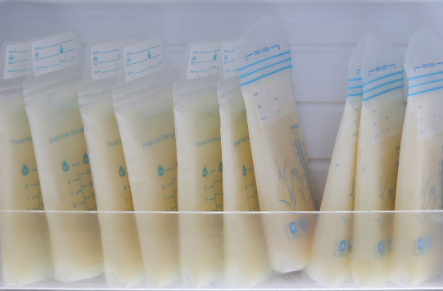Breastfeeding is far from easy, but just when you think you can’t get enough of a good thing, oversupply hits. Once you’ve made it through the first 6 weeks of establishing and regulating supply, the following are symptoms that could indicate oversupply. Are you uncomfortable or constantly feeling engorged or having pain in your breasts? Do you leak continuously between feeds? Are you experiencing lumps or “rock like” knots in your breasts? Feeling like you need to constantly nurse or pump to relieve your breasts? Other than these extremely uncomfortable symptoms, mismanaged oversupply can also lead to medical issues. A couple of medical issues associated with too much breast milk include clogged milk ducts and a breast infection known as mastitis. You may also experience nipple blebs as a result of too much milk. Don’t worry, we are going to review what could be causing your oversupply, how to manage it, and next steps!
Symptoms of oversupply in the Mother
- Constant engorgement
- Continuous leaking between feeds after supply has regulated
- Recurring mastitis or clogged ducts
- Milk or nipple blebs
- Needing to express milk beyond what baby is eating
Symptoms of oversupply in your Baby
- Coughing/ choking or sputtering at the breast
- Baby regularly fussy or gassy, acting uncomfortable and arching their back
- Fast and quick weight gain
- Watery or green stools
- Frequent, large amounts of spit up
Oversupply in your baby can cause them to respond by coughing and choking due to a fast flow. Babies that are getting too much milk are also likely sucking in air, which can result in your baby spitting up large amounts. Alongside these symptoms, the baby could experience digestion issues resulting in a watery bowel movement that is green in color. Likely, this is caused by the baby getting full before breast is completely empty – ingesting more lactose milk during the feed and not as much high fat milk which expresses toward the end of your let down.
Breastfeeding support
If you and your baby are experiencing a combination of these symptoms, oversupply could be the cause. Before trying to reduce your supply, seek counsel from a lactation consultant or Internationally Board Certified Lactation Consultant (IBCLC). Because these symptoms sometimes overlap symptoms of other challenges, it is important to properly diagnose this issue. The help of a professional will also ensure that milk production does not reduce to a level unable to support your babies’ nutritional and dietary needs.
If you need an IBCLC, my team is available to meet virtually or locally to Dallas, TX area. Schedule a consultation here.
What causes oversupply?
Now that you have seen the symptoms you might be curious how this happened in the first place?
Here are some common causes for oversupply
- Hormone imbalance – sometimes prolactin is very high and creates an overabundance of milk
- Over expression (including using the haakaa)
- Pumping regularly after feedings
- Focusing on creating a “freezer stash”
- Use of galactagogues – too much of these milk boosting herbs can enhance lactation
Ways to manage oversupply
Once you have met with a lactation consultant and they have confirmed you are experiencing oversupply, the following things may help to slow down your supply:
- Breastfeed lying down or reclined. This will allow your little one to control the pace of the feed more.
- Only feed your baby from one breast at each feed. This can also be referred to as block feeding. This should be done with the counsel of a professional.
- Switch to the opposite breast at the next feed.
- If you are pumping exclusively, you may need to space feedings out more consistently between 2-3 hours. If nursing, feeding on demand is still helpful.
- Try to avoid pumping/expressing outside of normal feeding times for relief. Expressing this extra milk will likely cause the oversupply to continue. If you must pump for relief, try only pumping for 30 seconds – 1 minute.
- Use nursing pads to reduce leaking, instead of using a haakaa or milk catcher.
- Avoid consuming supplements/foods that increase milk supply.
- Use ice to bring down breast inflammation
Following up
If you are treating oversupply, it is important to continue sessions with your lactation consultant. A professional can monitor you and your little babe’s symptoms and help you navigate lowering and maintaining a healthy milk supply. Like all things breastfeeding, oversupply can be managed, and nursing can remain a beautiful bond between you and your baby.



Recent Comments